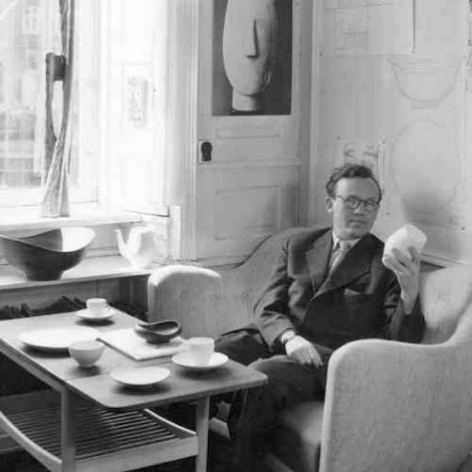15% off with DESIGN15

Finn Juhl’s Cocktail Table was designed for Baker Furniture in the United States to match the sculptural Baker Sofa. The economy was booming in the US during the 1950s. Hollywood and the new upper class had made cocktail parties immensely popular and Finn Juhl was readily impressed by this newfound American extravagance, which he got to experience through his new and influential American friends.
The elegant, three-legged coffee table is a further development of his earlier eye-shaped table, but as the expression goes, "everything has to be bigger in America". Despite its size, and thanks to its organic shape, with no sharp corners, the table allows for free movement around it. The Cocktail Table is light and elegant with refined design details. The table is manufactured in oak or walnut and with a tabletop in veneer or high-gloss laminate in white.
Wood oak or walnut
Dimensions 160 x 78 x H50 cm – Weight 15 kg
Cocktail Table
from
soaped oak
white oiled oak
oiled oak
clear lacquered oak
clear lacquered walnut
oiled walnut
Finn Juhl

As a teenager, Finn Juhl (1912-1989) wanted to become an art historian, having a passion for the fine arts since childhood. His father stopped him and Finn Juhl started architectural studies. Later, when his fame as a designer of furniture acquired, he speaks of himself as an autodidact, in reference to this upset vocation that forced him to walk intellectually on a lonely way. His style owes much to this singular trajectory, with its non academic interpretation of art visible in his work. Finn Juhl started his studies in 1930, a key period which saw the birth of modern design and furniture.
His modern offices in central Copenhagen was greeting his visitors with a huge Japanese fish in paper, symbol of imagination. Rather than thinking in terms of practical construction, Finn Juhl had the mind-set of a sculptor, when he shaped a piece of furniture. In the 1940s and 1950s, this way of working had never been seen before. His ambition was to design furniture with movement and life.
Juhl took pride in making both the structurally supportive elements of the furniture and the seated person look as though they are floating. In some of his chairs, the backrest and the seat are almost invisibly joined, as if they were clouds floating through the room.
In creating his furniture, Finn Juhl worked with two elements: The carrying element, and the carried. He eventually became known for his special ability to separate the bearing parts from the borne. This is one of many examples of how he broke free from conventional working methods and found his inspiration in art.
Ce site web utilise les cookies techniques pour fonctionner.
Vous pouvez les refuser, mais perdrez alors la possibilité d'acheter.
OK
Refuser